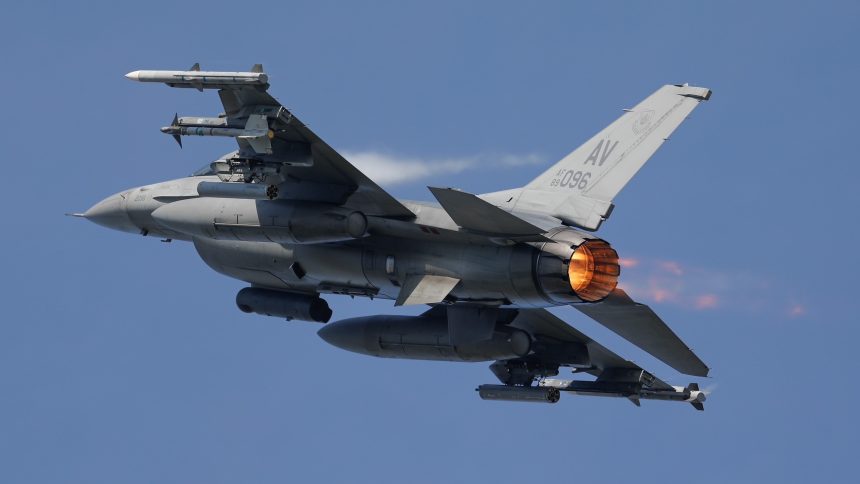The 555th FS deployed to RAF Lakenheath for live-fire air-to-air weapon employment, saving millions of dollars compared to a deployment to Tyndall AFB or Hill AFB.
Eight F-16s of the 555th Fighter Squadron “Triple Nickel”, assigned to the 31st Fighter Wing at Aviano Air Base, Italy, deployed last week to RAF Lakenheath, UK, for live-fire training. Interestingly, the U.S. Air Force has identified the deployment as Combat Archer UK, the analogous of the Combat Archer, or c (WSEP), usually hosted by Tyndall AFB, Florida, or Hill AFB, Utah.
The exercise, described as the USAFE’s largest Air-to-Air Weapons System Evaluation Program (WSEP) exercise, is meant “to assess and enhance operational fighter squadrons’ readiness for combat operations.“
Combat Archer UK
Combat Archer UK is meant to deliver an end-to-end assessment of the kill chain in a realistic combat environment for the 555th Fighter Squadron, said the Air Force. While deployed to RAF Lakenheath, the F-16s will use a military training range in Wales, the MOD Aberporth range in Cardigan Bay, to conduct the live-fire activity, as well as the Low Flying Area 17 in the Lake District to practice flight at low altitude while on their way back.
Visualizza questo post su Instagram
Notably, the Air Force said that “this iteration of Combat Archer will also integrate munitions, such as the AGR-20 FALCO laser-guided rocket, to practice countering one-way attack drones.” This was also confirmed by the photos captured by our contributor Stewart Jack, which show one of Aviano’s F-16s departing Lakenheath with both inert AGR-20s and an NATM-9M.
The latter is a Special Air Training Missile variant of the AIM-9M Sidewinder whose tactical warhead has been replaced with an inert warhead, while using the original rocket motor. This allows the weapon to be fired like the live one, without having the explosion once it impacts on target.
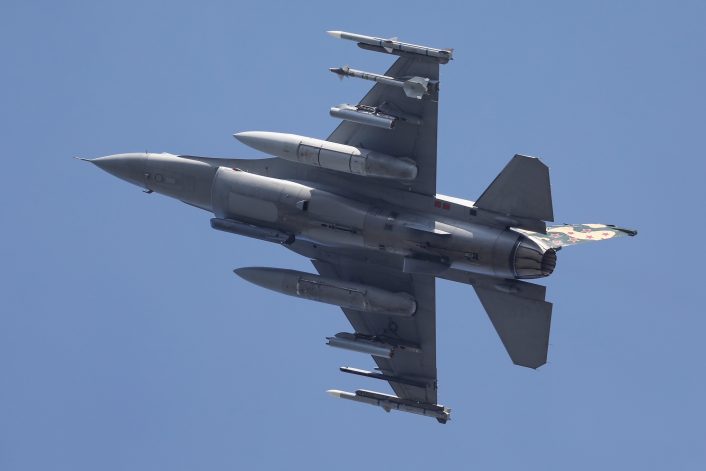
F-16s deployed to the CENTCOM (Central Command) AOR (Area of Responsibility) have been employing the AGR-20, also known as APKWS II, in the air-to-air role against Houthi drones and cruise missiles over the Red Sea since 2024. Interestingly, the Triple Nickel’s sister squadron, the 510th FS “Buzzards”, was the first to use the AGR-20 in combat in the air-to-air role.
During Combat Archer UK, the weapons are being employed against unspecified “threat-representative unmanned systems.” In Royal Air Force air-to-air missions at the MOD Aberporth range, the target of choice is reportedly the Mirach 100-5 drone, operated by QinetiQ under the Combined Aerial Target Service (CATS), although it is unknown if the USAF used the same service, according to a recent story about Aviano’s F-16 by Frank Crebas and Rich Cooper for Combat Aircraft Journal.
A number of Aviano F-16s are currently present at RAF Lakenheath one with a special tail, likely GINNIS 15 from yesterday [USAF Pic] pic.twitter.com/wIOw37Vr7K
— Saint1 (@Saint1Mil) April 10, 2025
Weapons System Evaluation Program
WSEPs are meant to provide an opportunity to thoroughly practice weapon handling and employment in operationally relevant scenarios. The main goals are two: providing crews with pilots and crews with real word experience in handling and launching live weapons, and evaluating tactics, techniques and procedures (TTPs) and performance of the weapons.
“By simulating real-world engagements, Combat Archer ensures aircrews and maintenance personnel are prepared for actual combat scenarios,” said Gen. James B. Hecker, USAFE-AFAFRICA commander. “This approach enables a full evaluation of the weapon system from start to finish. It will look at how we store and move weapons. How our munitions professionals build and load them on aircraft. How the jet and its systems perform. How the pilots adhere to procedures.”
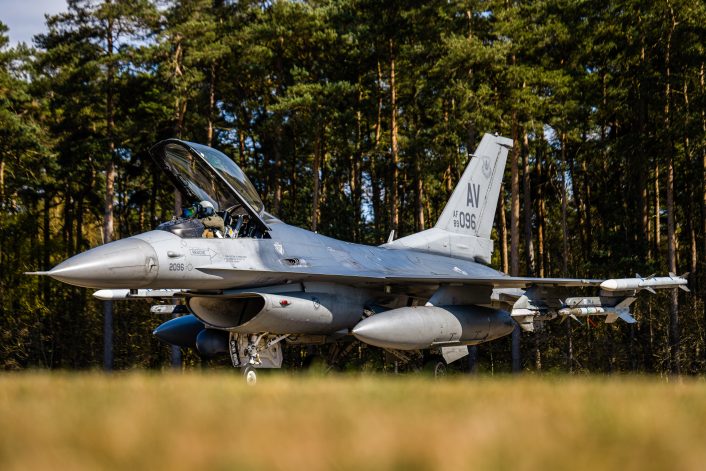
Having a chance to lift the weapons allows examiners to identify any weapons’ issues which could arise from the moment the weapon leaves the transport crate to the moment it impacts on target. These would then be addressed by munitions professionals, further improving TTPs, if required.
Also, WSEPs allow the Air Force to validate new tactics and examine, in the safety of a training environment, the techniques and technologies to ensure they are ready to be introduced in combat missions. WSEPs are usually held at Tyndall AFB, Florida, and Hill AFB, Utah, because they have the required telemetry systems to record all the data about the behavior of the missiles in flight.
Such an awesome aircraft 😎
It’s great to catch F16’s from the 555th Fighter Squadron from Aviano Air Base at RAF Lakenheath whilst they take part in Combat Archer 🇮🇹🇺🇸🇬🇧 pic.twitter.com/a8ge8eySng
— Strix Photos (@StrixPhotos) April 12, 2025
Cost reduction
The service stressed that, “by hosting Combat Archer UK in Europe, U.S. Air Forces Europe saved millions of dollars, allowing them to enhance the mission while staying on the right side of the cost curve.” In fact, flying the F-16s from Italy to the U.S. would require large quantities of fuel and support aircraft, which the Air Force said “can be cost prohibitive.”
“Holding the exercise in the European area of responsibility provides significant strategic advantages, reducing the need for transatlantic aircraft movements and resulting in substantial cost savings,” said Gen. Hecker.
Amid new budget cuts and financial constraints, the Air Force is adopting a new cost-reduction strategy to make training more efficient and affordable without decreasing the quality. The new WSEPs in the European continent are likely among the measures included in this strategy.
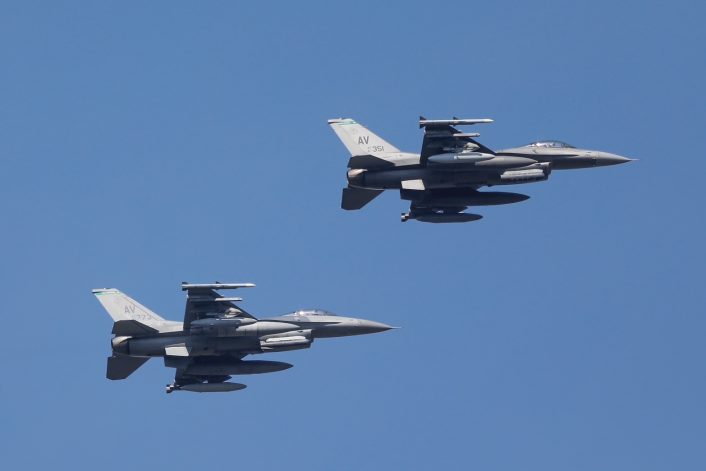
AGR-20 FALCO
The APKWS II (Advanced Kill Precision Weapon System II) has been used for some years by the U.S. Air Force, with the designation AGR-20 [(A) Air-launched (G) Surface-attack (R) Rocket], first in the air-to-ground rocket and now in the air-to-air role, specifically the counter unmanned aerial system role.
The AGR-20 APKWS II is a conversion of the Hydra 70 unguided rockets which adds a laser guidance kit to the baseline weapon, turning it into a precision-guided munition (PGM). By adding a guidance section between the 10-pound high-explosive warhead at the front of the rocket and the Mk66 Mod 4 rocket motor at the rear, the U.S. Air Force has therefore been able to obtain low-cost smart munitions, reportedly costing $33,000, that can be used instead of more costly options.
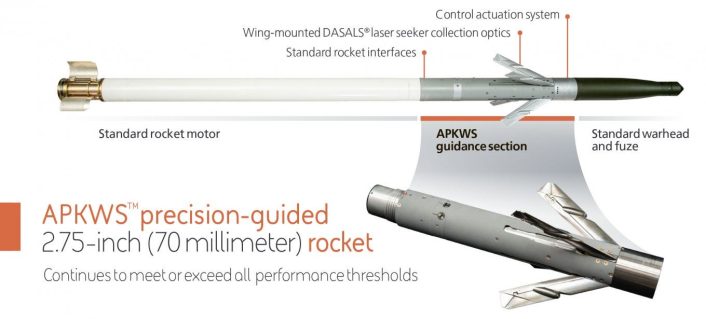
The guidance section of the APKWS includes four foldable wings with wing-mounted laser seeker collection optics, called the Distributed Aperture Semi-Active Laser Seeker (DASALS), with a wide field of view which enables to engage both moving and stationary targets. BAE Systems, which produces the weapon, says that “no modifications are required to the rocket, firing platform or fire control system,” with the only known modification being a longer variant of the LAU-131/A 7-round rocket launcher normally employed by the U.S. Air Force, called the LAU-131 A/A (the Navy uses the AGR-20 with the similar LAU-68 F/A).
The 85th Test and Evaluation Squadron (TES) first tested the APKWS II in the air-to-air role on Dec. 19, 2019, shooting down a subscale drone in a proof of concept demonstration which saw an F-16 firing the rocket and guiding it on target with the targeting pod. The weapon system underwent the Fixed Wing, Air Launched, Counter-Unmanned Aircraft Systems Ordnance (FALCO) upgrade program meant to improve the counter-UAS capabilities.
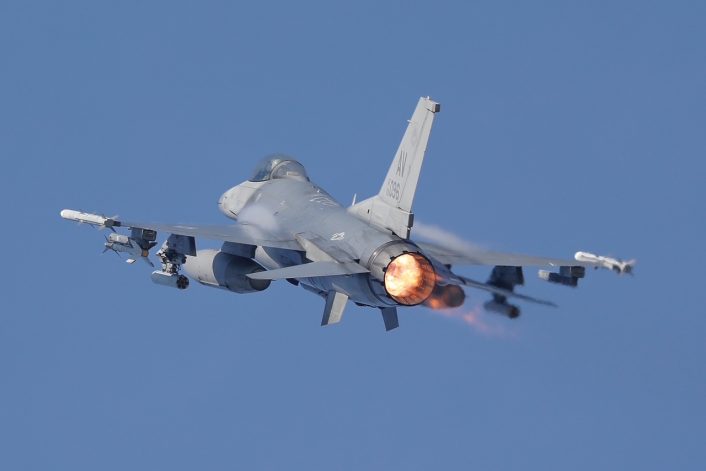
The AGR-20 FALCO is an upgrade over the APKWS II, which includes software upgrades to increase the lethality of the weapon in air-to-air engagements against UAS. This variant is currently fielded in the CENTCOM AOR and, according to Naval News, is being used with a high probability of kill.
FALCO was a response to an emerging operational need and, after being seamlessly rolled out, enabled a significant improvement in the U.S. Air Force’s counter-UAS capabilities.
BAE Systems has unveiled a new infrared seeker for the APKWS II, in addition to the existing laser guidance, making this a dual-mode weapon. The new IR seeker builds on the new FALCO capabilities, improving even more the C-UAS capabilities of the service.

